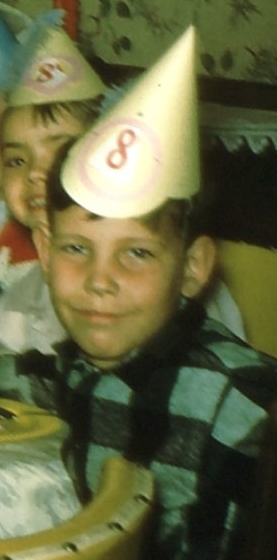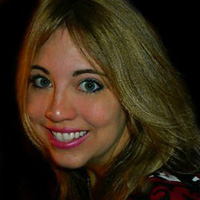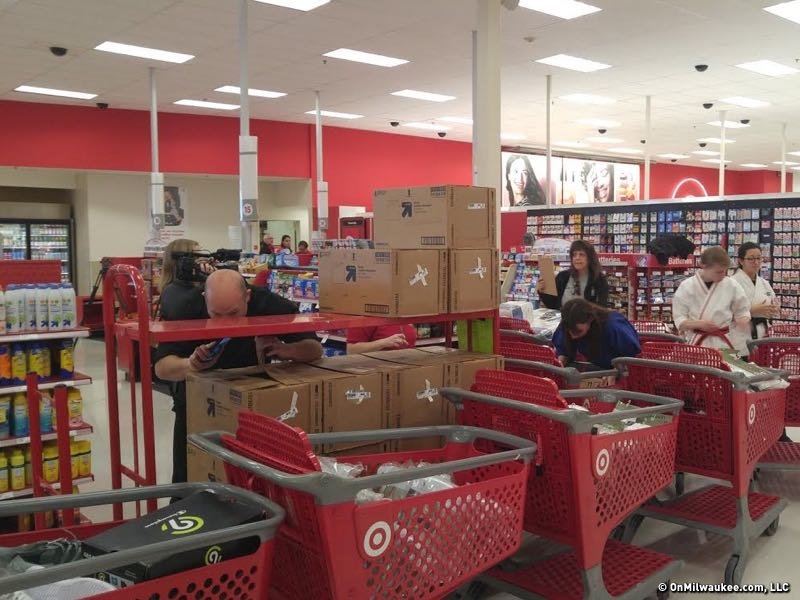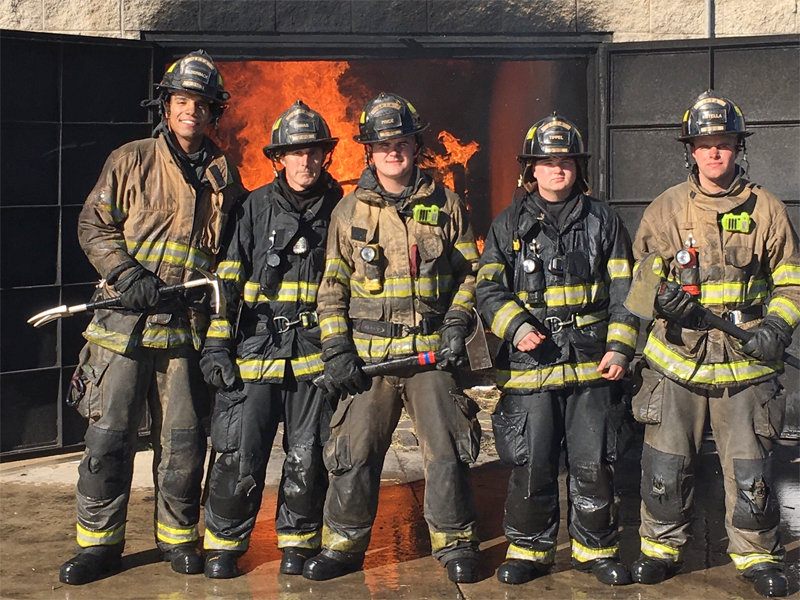And then there were four.
They are:
Willie Bedford, of Milwaukee.
Carl Leslie Crowley, of Milwaukee.
Rudolph Glenn Valenta, of Milwaukee (but I think we will have his photo imminently. More on that in a moment).
Terrence Jay Freund, of Sheboygan (I was just told by the folks in D.C. who run the wall to add Freund to the list this morning. They thought they had a picture a long time ago so he was considered found and never on any of the lists of missing, but they just realized they have the wrong picture. So we also need Freund).
If you knew them or their family members, please email me at jessicamcbride05@live.com. If you have any clues, that would help, too – the name of a parent or sibling, a prospective high school; any hint can help.
At the end of March, I wrote about the efforts of my UW-Milwaukee journalism students to find missing photos of Wisconsin service members who died in Vietnam. We’d become involved after I met a Dodge County father whose son, David Johnson, died in Afghanistan. For over a year, that father – Andrew Johnson, a newspaper publisher – and his wife Laura had been going around the state seeking photos.
The search is part of a national effort to put a face with every name on the Vietnam Memorial wall in D.C. Many of the military photos burned in a major fire in the '70s. Only a handful of states have found all of their photos. They will run some day in a major education center the non-profit wants to build across the street from the wall; for now, they run on a Virtual Wall of Faces.
Our goal – and Johnson’s goal – is that, by Memorial Day, Wisconsin will join that list of states and be able to say, "All of ours are found." It says a lot about us as a state if we can do that. This has nothing to do with the political questions of war. It has to do with preserving history and who these men were.
We are close. In February, there were 64. Today, there are four – three from Milwaukee. And perhaps by the time you read this, we will have some (or all) of those four. But we need your help. And even if we eventually find photos, family members and the vets always appreciate even more. Back in March, when OnMilwaukee.com published the list of missing, I received emails within mere hours that helped us find missing photos. One was from the sister of a Milwaukee man who died in Vietnam by the name of John Schurrer. Their father was a retired police officer and World War II vet, as well as a well-known and dedicated American Legion commander in Wisconsin. She sent me a photo.
We also received an email from a high school classmate of Robert Uthemann as a result of that OnMilwaukee.com piece. She suspected that Robert Uthemann was actually her classmate Herbert at Pulaski High. This seemed implausible; how could someone named Robert have been called Herbert? But he was, as it turned out. My student Bo Bayerl tracked down Uthemann’s brother, Jurgen, in Milwaukee, and he explained that they were German immigrants and, yes, Robert changed his name. Jurgen didn’t have family photos, but the high school gave us yearbook pics. So now he has been able to lay eyes on his brother's face again too.
This is a community effort. That’s what stands out to me. Younger generations and old have come together to find these. Students and veterans. Black, Latino, American Indian and white. Republican and Democrat. And the media has really made a difference. Hometown newspapers and commercial TV. Online sites like this one. Public radio. African-American media. All have come together to ensure these young men who left our state 45 years or so ago are properly humanized. The students have worked hard, but they are a cog in a very big wheel that involves so many others.
One thing that jumped out to me when doing this search was how little was written about these men when they died. Generally, the media wrote briefs announcing they’d died with next of kin, but made no attempt to explain who they were (however, that shows the importance of newspapers. Without those briefs, far fewer would be found. The written word is less ephemeral).
The students are writing that "rough draft of history" more than four decades later. It’s harder now, clearly. Tracking people with 45-year-old addresses isn’t easy. Finding pictures of people who died before the advent of the Internet is tough. But it’s possible. The Internet has made it easier to follow people’s familial connections. But memories are fading. Few of the parents are living. Siblings and platoon members are in their sixties. In a few years, those with a living memory of these men will be gone. Some of them already are. The student stories will run shortly at our award-winning student news site mediamilwaukee.com.
The stories are jaw dropping. One student interviewed a man who killed the soldier by friendly fire and has spent decades coming to terms with it. Another was given all of the service member’s photos by his terminally ill sister, who wanted her memories recorded and the photos preserved before she died. The sister of an Italian immigrant who died in Vietnam unearthed a photo in her California garage. We followed trails that led back to the Menominee and Stockbridge Munsee reservations and into the heart of the South. The list of 64 – mostly from Milwaukee – was extraordinarily diverse. We found pictures of African-American, Caucasian, Latino and American Indian service members. The list, truly, was reflective of the diversity of Milwaukee as a whole.
Here’s an example of how hard some of these were to find – and how interesting. My student Molly Bryant worked so hard on this one.
James Calvin Ward was 17 when he died, one of approximately 18 juveniles to die in combat in Vietnam. The military banned combat for juveniles after his death and that of another 17 year old. He’d enlisted from Milwaukee, but we soon figured out he was born in Arkansas, and his family’s roots were in Hot Springs. An old newspaper article reported he was the son of JC Ward of Fort Bliss, Texas. We figured out where JC was buried and, through that, where he died – El Paso.
This led to his obituary which led to his widow (who had no picture) and his sister (who had no picture) and a cousin (who had no picture). We found an elderly aunt in Michigan who said she didn’t have a picture and then that she might but she was too infirm to come to the door. The cousin told us that James Calvin had a son, which surprised us because he was only 17 when he died. We found that son in Hot Springs, but … he had no picture of his father, either. But the son had seen a photo once, hanging in his grandfather’s house: a military photo that he described so vividly it was like obtaining the photo through his memory – but not literally. But he didn’t know where it went. We called his mother, who had no picture either but suggested that only the cousins in Michigan might. Back to where we started, but we called the cousin in Michigan to see what she had learned, and in the interim, the elderly infirm aunt had unearthed a photo after all, and within an hour, it arrived to me by text from the cousin who drove over there to get it. It appeared to be the picture that James Calvin’s son had described, and we will be sending it to him as well as for inclusion in the education center and on the virtual wall.

And then there was Clarence Clifton Adams, also of Milwaukee. We couldn’t find his family (father, Lawrence), so we started tracking down members of his platoon. A platoon member had no picture but did have a 45-year-old notebook in which he’d scribbled the names of others. Phone numbers were easy to obtain for those with less common names, and the second on the list had a picture of Clarence. It landed in my mailbox Monday. One of the platoon members described seeing Clarence die; he died in a five-day firefight on a mountaintop on the eve of the fifth day, in a battle that also killed a Medal of Honor winner. The Medal of Honor winner was a conscientious objector too patriotic not to serve but morally opposed to war, so he refused to carry a gun. Imagine going to war without a gun. Clarence was described as quiet but always smiling.
The stories are rich, they are human, and they matter. The photos do too. My students are honing their research and interviewing skills. They’re learning that journalism, at its best, is connected to its community and makes a difference. They’ve impressed me continually as the weeks passed. I felt UWM was particularly well positioned to assist with this. Most of the men were from Milwaukee on the final missing list, and UWM educates more veterans than any four-year university in a six-state region. Our students are adept at multimedia skills, research and writing.
As to those last four:
My student Rachel Maidl reached Willie Bedford’s brother and sister, but, sadly, the family has no photo of him. Milwaukee Public Schools PR Manager Tony Tagliavia is helping so much, even pouring through yearbooks himself; he determined the family was right when they recalled Bedford going to North Division and Riverside High Schools, but that Bedford wasn’t pictured in those yearbooks. Tuesday, Tagliavia figured out that Bedford also attended the old Lincoln High School in fall of 1968, which the family didn't remember, so we are currently pursuing that lead. My student dubbed him the "Invisible Man" because lead after lead evaporated (a former unit member had no picture either), making us wonder, does a picture of Willie Bedford even exist?
If so, we will find it. Let’s cross our fingers that he sat before a camera at Lincoln High. But we’re learning that people didn’t really take as many photographs back then. Well, we knew that, but it’s underscored. After a story aired on Channel 6 on Tuesday night about the UWM students and search for the final four, more tips came in from people who went to high school with Bedford. So there are leads. No photo yet, though.
Carl Leslie Crowley we knew less about. We knew he was buried in Milwaukee with his wife Brenda A. Crowley, and we knew she died in California a few years ago. That enabled us to track down HER family tree, but phone number after phone number was disconnected. I drove to one home on North 4th Street last week looking for her brother, Marlon Taylor, but the address was a vacant lot. I believe she has two brothers in Milwaukee – Mark Taylor is the other. I finally reached a niece, and she pledged to take the quest to the family of Crowley’s deceased wife. Waiting to hear.
But, then, late Tuesday night, after the news coverage and stories put out by UWM PR, I received Crowley’s obituary from Tiffiny Neal, one of the co-founders of the Wisconsin Association of Black Genealogists. Many people had looked for this, but it had run many days after his death. Now we know his family. He had a two-year-old son when he died. We are actively pursuing leads, but at press time we still lack his photo.
Rudolph Glenn Valenta we knew more about. And we actually already had a picture of him – but he’s only eight years old in it and wearing a birthday party hat. My student Molly Bryant got that from a childhood friend. So we left him on the list because we need an older photo. We knew he was married to Christine M. when he died but couldn’t pick up a trace – not uncommon when women remarry and change their names long ago. We know he went to Kagel Elementary School, and on Tuesday, we learned his mother was Gertrude Fox. We called the cemetery, the funeral home, had MPS search – to no avail.

On Tuesday night, as a result of a story that aired on Channel 12, I received an email from Christine’s daughter. So I am hopeful – very hopeful – that we will have a picture of an older Valenta soon. As I type this, we don’t.
The semester ended earlier this month, and I’ve been running down the leads of the final pictures, along with a veteran named Terry Kramer – who drives from Baraboo to research photos at the Milwaukee Public Library many days and has found 41 photos – Oak Creek author Tom Mueller, and a devoted group of students who are still working hard at it even though they’ve already earned their grades. There’s also Virgil Matz, a historical researcher from Black Earth who helps trace family trees, and Bryce Kelly, a Medford teacher who assigned his students to the task in 2009 and found hundreds of photos. We all email each other constantly as we share clues about the final names on the list. Reporters, veterans and volunteers have all contributed.
(UPDATE: On Wednesday morning, the governor's office asked me how they can help; the governor published the names on social media when we were down to seven last Saturday to help.)
This is a community effort. And, to me, that means this exemplifies Wisconsin at its finest.
Jessica McBride spent a decade as an investigative, crime, and general assignment reporter for the Milwaukee Journal Sentinel and is a former City Hall reporter/current columnist for the Waukesha Freeman.
She is the recipient of national and state journalism awards in topics that include short feature writing, investigative journalism, spot news reporting, magazine writing, blogging, web journalism, column writing, and background/interpretive reporting. McBride, a senior journalism lecturer at the University of Wisconsin-Milwaukee, has taught journalism courses since 2000.
Her journalistic and opinion work has also appeared in broadcast, newspaper, magazine, and online formats, including Patch.com, Milwaukee Magazine, Wisconsin Public Radio, El Conquistador Latino newspaper, Investigation Discovery Channel, History Channel, WMCS 1290 AM, WTMJ 620 AM, and Wispolitics.com. She is the recipient of the 2008 UWM Alumni Foundation teaching excellence award for academic staff for her work in media diversity and innovative media formats and is the co-founder of Media Milwaukee.com, the UWM journalism department's award-winning online news site. McBride comes from a long-time Milwaukee journalism family. Her grandparents, Raymond and Marian McBride, were reporters for the Milwaukee Journal and Milwaukee Sentinel.
Her opinions reflect her own not the institution where she works.







